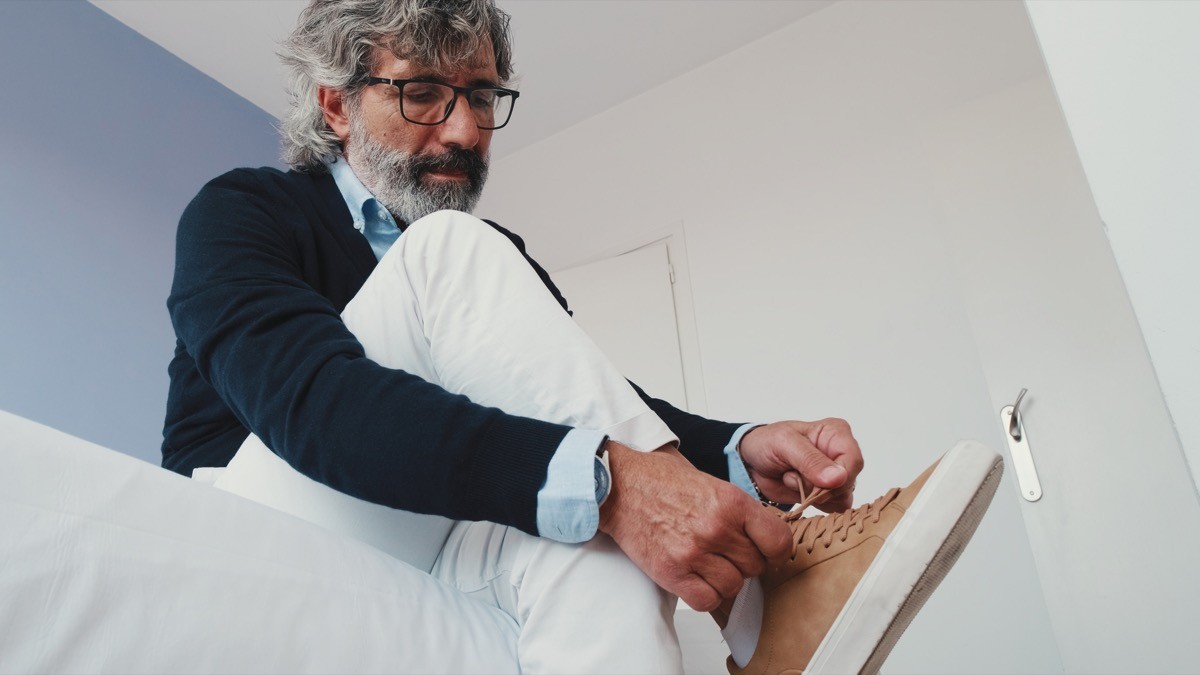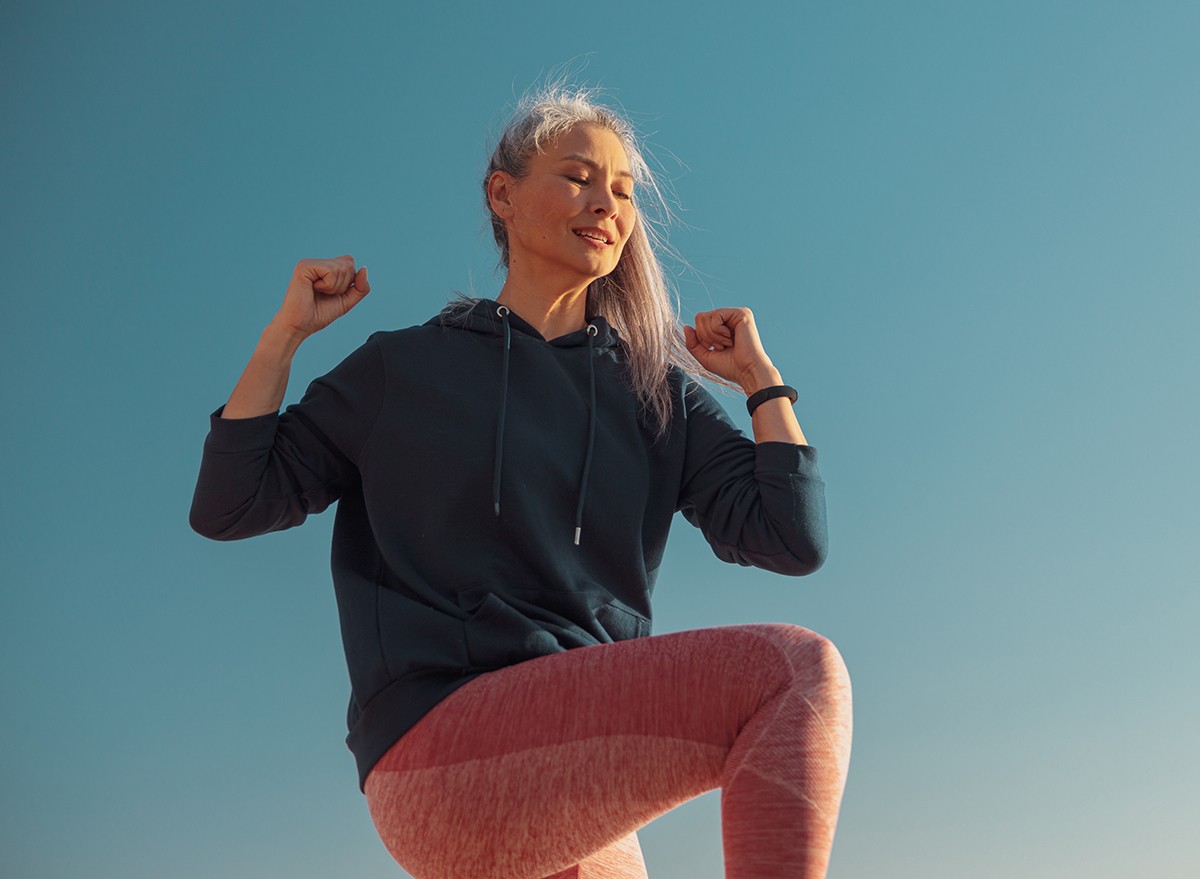Can You Pass This “Old Man Test” That Measures Balance, Coordination, and Strength?

Can you do the “Old Man Test”? This little challenge invented by CrossFit trainer Chris Hinshaw seems simple enough but it’s not as easy as it looks. The test is a good indication of fitness levels, balance, coordination, and strength, and has gone viral on social media, with lots of people attempting the challenge, some successfully, some not so much. Here’s what you need to know about the Old Man Test, and why it’s important.
RELATED: 5 Best Exercises to Improve Coordination.
How To Perform the Old Man Test

Here’s how to do the Old Man Test, according to Crinshaw: “You have to pick up one sock and put it on. Pick up the shoe for that same foot. Put that shoe on, and tie it, without touching the ground. As soon as you tie up that one shoe, you can put it on the ground. The other foot goes up in the air, you must reach down, pick up the sock, put the sock on, reach down, pick up the shoe, put the shoe on, tie it, and then you can touch [the ground].” Remember—you should be balancing on one foot except for the moment when you’re switching feet.
Why Is the Old Man Test Important?

The challenge is a good way to see how well you can balance. “Our ability to balance reflects all the interconnected systems that are required to effectively process the experience of standing,” geriatrician Dr. Lauren Hersh of Jefferson Health in Philadelphia tells the New York Post. “So we can use balance as a ‘red flag’ that something else might be going on. It helps us assess risk and introduce strategies to reduce that risk.”
Decline of Balance

Balance is key to healthy aging, experts say. “Researchers have found that balance begins to decline in midlife, starting at about age 50,” say Elizabeth Ko, MD, and Eve Glazier, MD, via UCLA Health. “In one recent study, adults in their 30s and 40s could stand on one foot for a minute or more. At age 50, the time decreased to 45 seconds. At 70, study participants managed 28 seconds. By age 80 and older, they lasted less than 12 seconds standing on one foot.”
RELATED: 6 Best Low-Impact Workouts to Burn Fat.
Use It or Lose It

It’s important to practice balance as we grow older, to retain the skill. “Resistance training and weightlifting will build strength and stamina, while practices such as yoga, tai chi, Pilates or targeted stretching exercises will help with flexibility,” Drs. Ko and Glazier say. “Simple things, such as standing on one foot for a period of time while watching TV or waiting in a line, always rising from a chair without an assist from your arms, practicing walking backward or walking heel-to-toe in a straight line all directly target balance.”
Flexibility Training

Good balance is important for preventing falls and living an independent lifestyle. “Flexibility training involves stretching the muscles and joints, which can improve range of motion and reduce stiffness,” says Evan Papa, Associate Professor of Physical Therapy and Rehabilitation Science, Tufts University. “By improving range of motion, older adults can improve their ability to move safely and avoid falls caused by limitations in mobility.”